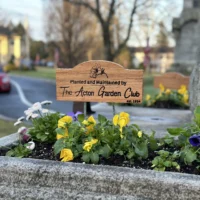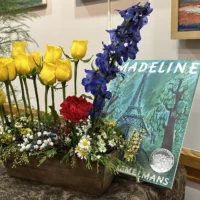Acton Garden Club looks forward to participating in this year’s 2025 “Art in Bloom” at Boston Museum of Fine Arts (MFA) Friday, May 2 to Sunday, May 4. During this annual spring event, New England garden clubs, professional designers, and MFA floral volunteers, create interpretive arrangements inspired by artworks from the collection.
Starting with their first meeting in February, designer Cathy Fochtman and her assistant Diane Krasnick are preparing, through research and experimentation, to create their final design for the show.
After I explored the MFA last year and viewed the simply gorgeous interpretation of Gulf of Spezia by Henry Roderick Newman,1884, I interviewed the designer, Cathy Fochtman, and her assistant, Susanne Fuller.
We can’t wait to see the interpretive floral design that Acton Garden Club Designer Cathy Fochtman and her assistant will create this year!
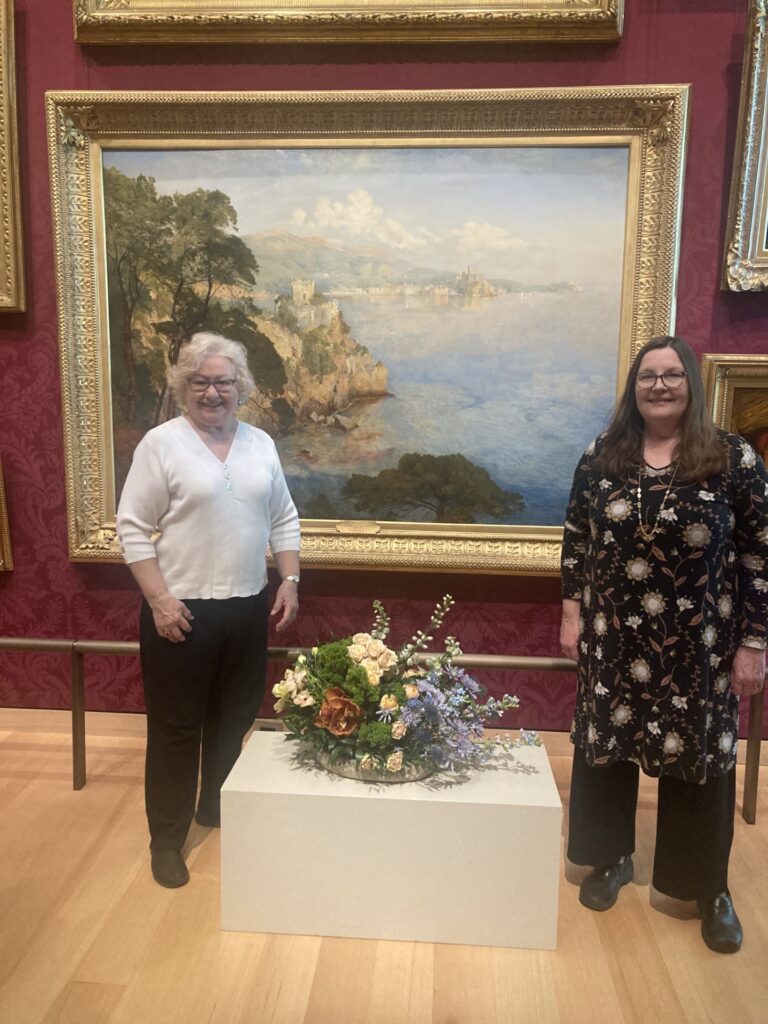
You’ve just wandered through the floors of the iconic Museum of Fine Arts to view the Art in Bloom exhibits. Some you like, some you’re not so sure of, some you wonder about, and some you think, “Glad I didn’t have to interpret that piece!” But have you stopped to ask yourself what exactly the path to exhibiting is? Where does it all start? Are there rules? Where do the flowers come from? Are there prizes? Can anyone apply?
That’s a lot of questions, and maybe there is a lot more than meets the eye to this little or not so little arrangement of flowers sitting next to this bowl or painting. There certainly is, and Acton is graced to have answers to these questions from the Acton Garden Club floral designers who exhibited last year.
Ann Marie Testarmata (AMT): So, Cathy and Susanne, how and when did this wonderful interpretation you presented all start for you?
It started with the November announcement and application that the Museum of Fine Arts extends to Massachusetts Garden Clubs after Thanksgiving. Fifty clubs are selected to designate a designer and assistant to participate. Art in Bloom is a non-competitive exhibition, and each floral arrangement reflects the qualities of a unique art object selected by the museum curators and the Art in Bloom Committee. Professional designers and florists are also participating, with stunning, standalone, large-scale arrangements.
AMT: And who is eligible to participate?
A designer is often recommended by our Floral Design Chairman, and the designer typically asks a colleague in the club to assist.
AMT: And when do you find out you are invited?
After the applications are received by the Art in Bloom Committee, they send out an email confirmation listing the important dates for the participants: Arranger Orientation Day when the designers receive their art object assignment, Arranging Day, Art in Bloom exhibition dates, and Pick-up Day.
AMT: And when do you find out what piece you are interpreting?
Last year it was on February 26.
AMT: What piece did you interpret this year? How did you feel about this assignment?
Susanne: I was delighted to get an art object that had such beautiful colors, a large canvas depicting an Italian coastal scene, “Gulf of Spezia”, by Henry Roderick Newman, 1884. I feared getting a piece of furniture like a large, beautiful chest of drawers.
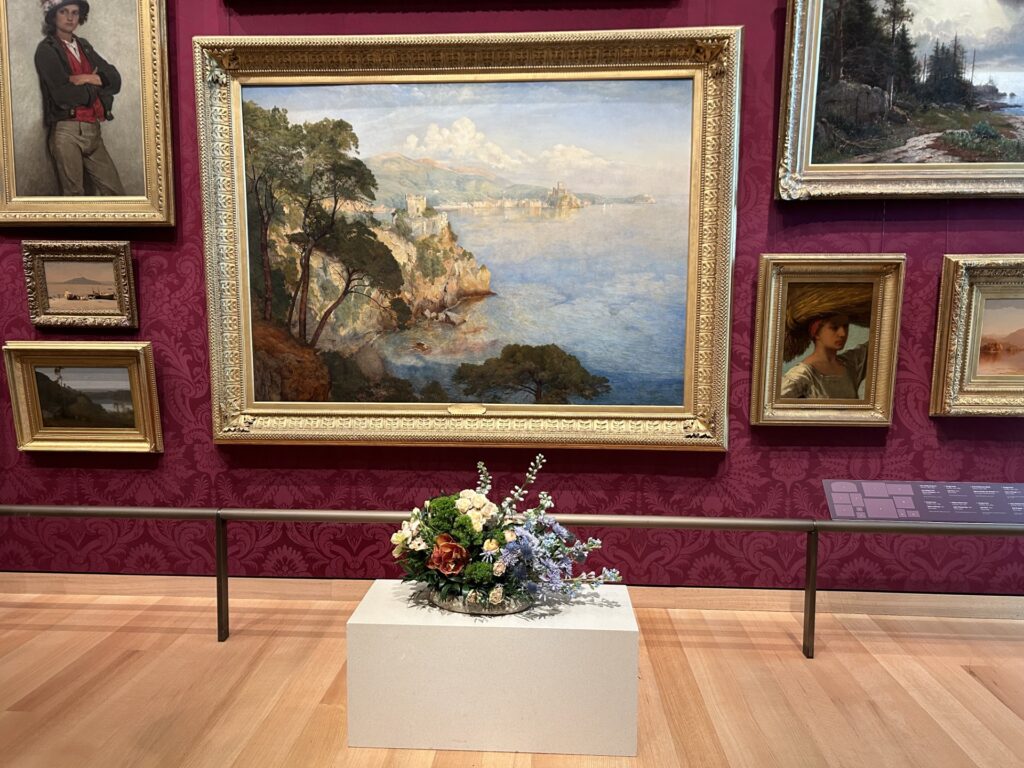
AMT: What thoughts came to mind as you learned of your assignment?
Susanne: I thought our biggest challenge would be finding good blue flowers; many of the blue flowers are too purplish or too large in scale.
Cathy: My biggest challenge was to locate an appropriate container. The assignment specifies the staging on which the arrangement is to be displayed. Our pedestal was a low, long table and the arrangement could not exceed 18” in height.
AMT: And then what did you do? Research?
We read about the artist’s training and interests. He was an American who was aligned with the Aesthetic Movement in the U.S. He emigrated to Italy and this painting was one of his favorite landscapes. He typically worked on smaller scale pieces in watercolor, so this massive landscape painting was an impressive project. He employed the same tight and precise brushwork used for smaller compositions, so the detail of the land and sea elements was incredible.
We went to see the painting right after the meeting at the MFA when we were given our assignment. We took pictures of it so we could plan our flowers.
We thought of many options for a container. Later, Cathy found an excellent one that fit the requirements very well. We needed it to be wide and shallow and earthy-looking. We also decided to use a smaller, inconspicuous container within that one to actually hold the oasis and water for the flowers.
Cathy went to the flower market and picked up some flowers, which we used with some she had left over from another project to make a trial run arrangement. It’s very helpful to trial the arrangement, paying close attention to the dimensions or “frame of reference” in which your design will be viewed. We realized that the arrangement would have to be wide and that it would be viewed more from the top than is usual.
AMT: The Day is approaching; you’ve got your assignment, your design, your vessel… what about the flowers? Where do you get them? What is special about them? What are the requirements?
The flowers came from the New England Flower Market. We shopped at two or three different vendors there. The MFA prohibits the use of fruit or vegetables or any food. They also prohibit fabric and “loose” water; our water had to be absorbed by the oasis. The MFA did not want plant material from our home or garden for fear of importing pests into the museum.
AMT: Tell us about the trip to the Flower Market.
We shop the day before we arrange so that the flower and foliage bunches can be groomed – packaging removed, excess foliage removed, stems cut and placed in water with floral food to hydrate overnight in a dark, cool room. We selected flowers that would be long lasting and had a mix of elements that evoked the forms and colors found in the painting. The list included: Carnation, Chrysanthemum, Delphinium, Eryngium, Fern, Italian Ruscus, Orchid, Rose, Ranunculus, Trachelium, and Tweedia.

AMT: Where and when did you assemble the piece?
At Cathy’s on Wednesday, the day before we had to set it up at the MFA.
AMT: When did you install the piece?
Thursday – very early in the morning. The doors opened at 6:30 a.m. and we had until 9:00 a.m. to set it up.
We had to use a special kind of sticky wax to hold the container in place on its pedestal so that it wouldn’t easily slide around or off the pedestal.
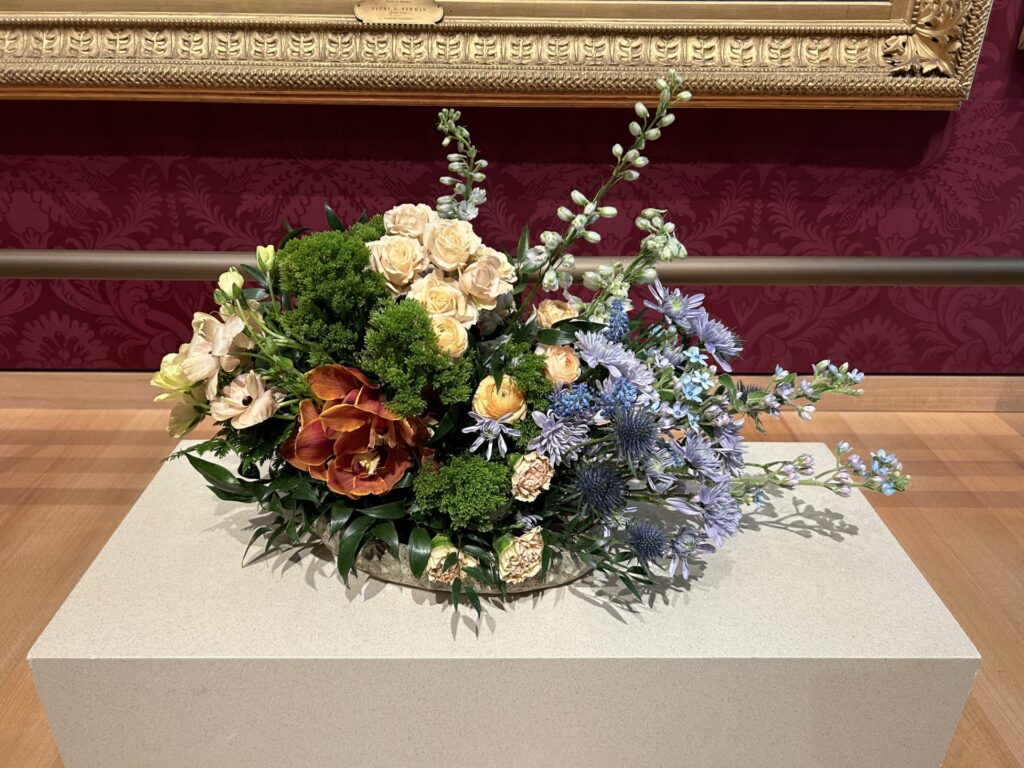
Someone from the MFA stood by us every minute we were there to be sure we didn’t do damage to any of the art pieces. We had to demonstrate that our container was waterproof. And they made sure we didn’t have any edible plant material.
AMT: It’s Thursday! The show has begun! What now? Did you go every morning to check the exhibit, refresh the flowers?
We took turns refreshing the design (if needed) and adding water (supplemented with plant ‘vitamins’.) Susanne went in on Friday and Saturday mornings, and Cathy went in on Sunday. On Monday morning, she retrieved the design.
AMT: It’s Sunday night and the show is over. Did you breathe a sigh of relief? What’s next? And what are your thoughts about next year?
Susanne: My thought for next year is to allow someone else to have the honor and joy of participating. (Welcome to Diane Krasnick, our design assistant in 2025.)
Cathy: Art in Bloom is a unique opportunity to partner with other designers and collaborate on a large-scale design that is viewed by a wide audience. Just the kind of challenge I like and encourage others to participate in.
If you are interested in viewing the work of Cathy, Diane, and other talented flower artists, the museum is open from 10am to 5pm, and 2025 Art in Bloom will run from Friday, May 2 through Sunday, May 4. Admission to Art in Bloom is included with general admission. More details for planning your visit are on the MFA website.
Ann Marie Testarmata is the Acton Exchange’s Correspondent from the Acton Garden Club.

